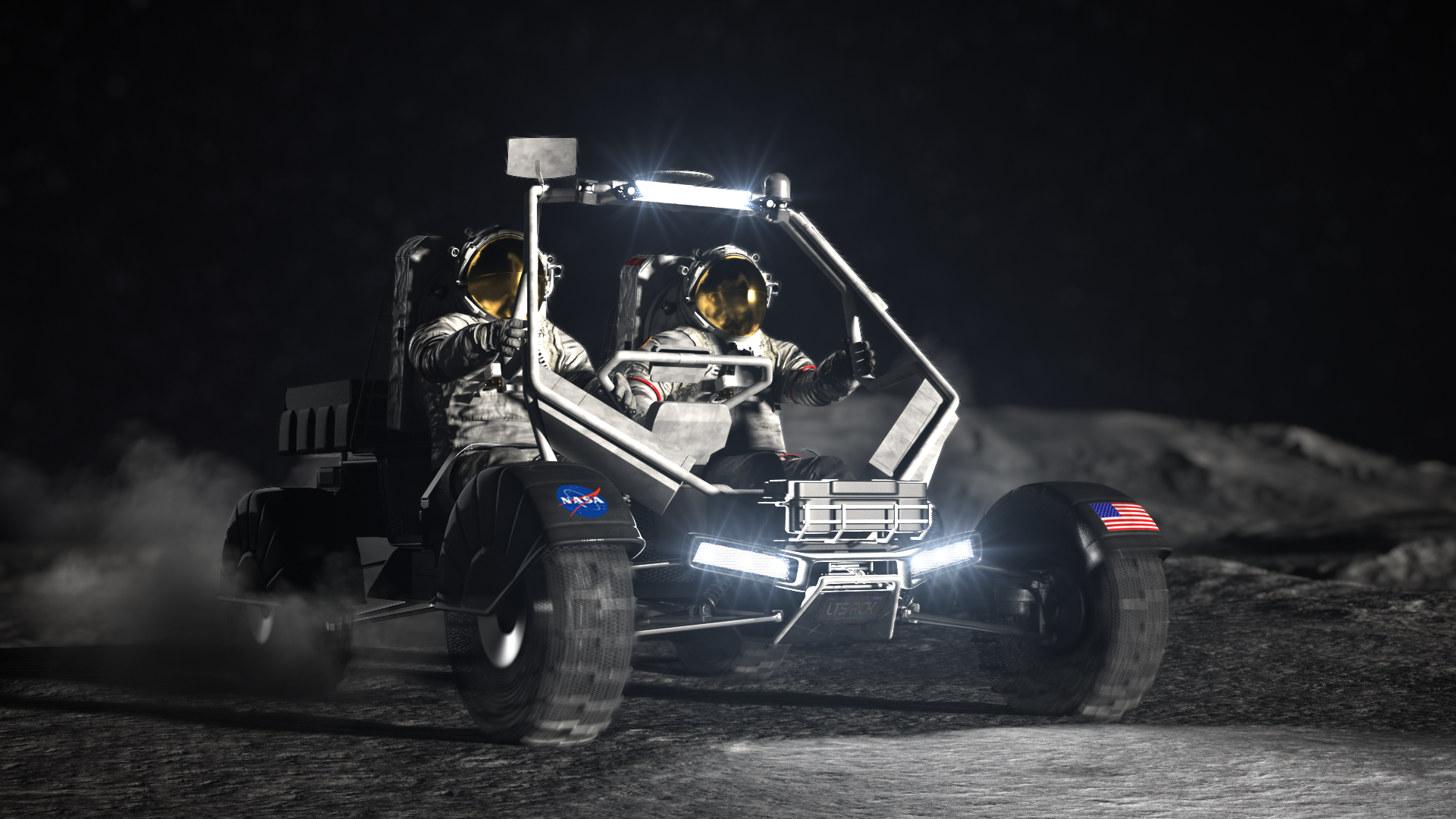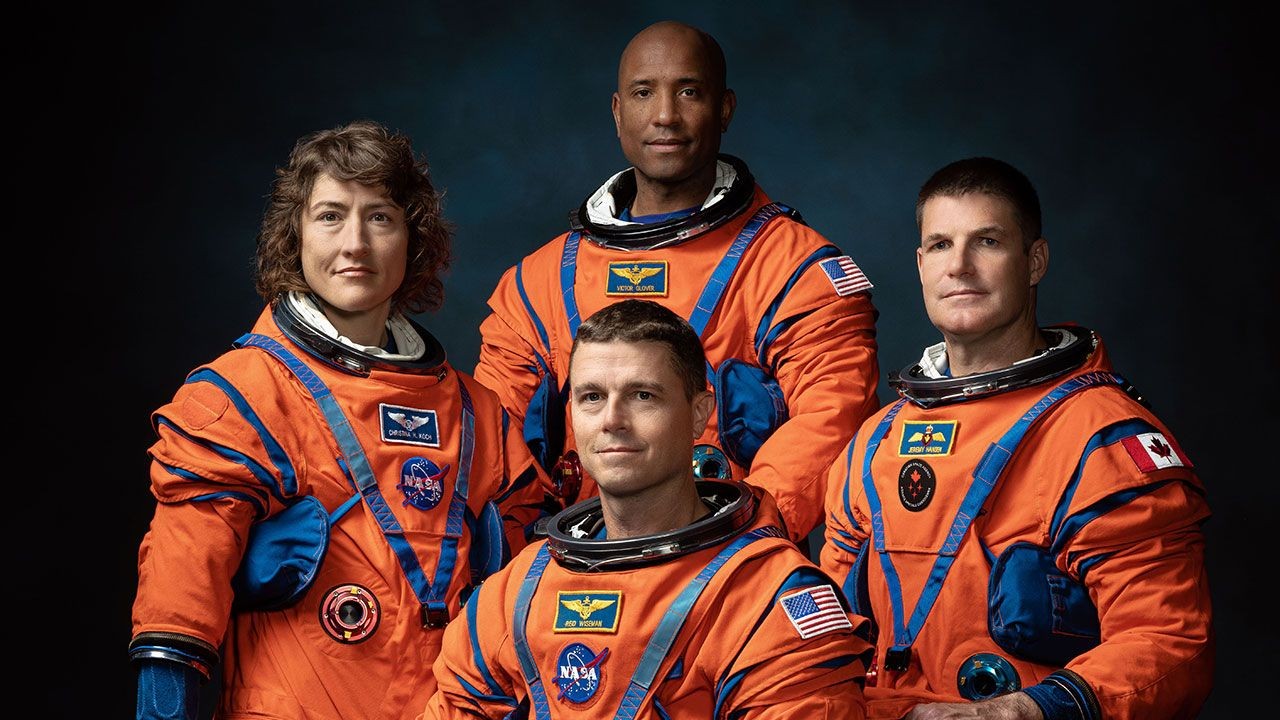NASA's new moon car for Artemis astronauts will be inspired by Mars rovers
NASA wants more than just a lunar golf cart.

NASA's next moon car will be part vehicle, part robot.
The new lunar terrain vehicle (LTV) the agency is planning will be required to transport a crew of two astronauts on the surface of the moon, but will also function semi-autonomously to conduct experiments on its own. Similar to how the Perseverance or Curiosity rovers operate on Mars, the LTV will collect samples and perform analyses with remote operators calling the shots.
NASA is now calling for private companies to cast their submissions for an LTV services contract for future Artemis missions to the moon. The Request for Proposal (RFP) was published on May 26, and gives interested parties a July 10 deadline for LTV proposals.
Related: NASA's Artemis program: Everything you need to know
To help guide proposals, NASA has provided a list of service and design requirements for prospective LTV manufacturers to meet. Similar to NASA's approach with SpaceX's Crew Dragon and the commercial crew program to transport astronauts to the International Space Station (ISS), LTV hopefuls must provide end-to-end services as a part of their contract, "from development and delivery to the lunar surface, to execution of operations," a NASA release said.
The space agency wants the LTV to be capable of autonomous functionality, and thus plans to equip the vehicle with a suite of scientific instruments, a robotic arm and prospecting tools to continue exploration during gaps between crews flying missions in NASA's Artemis program, which will send astronauts back to the lunar surface for the first time in over five decades.
Artemis 1 launched an uncrewed Orion capsule into lunar orbit in November 2022, and Artemis 2 aims to fly a similar mission with astronauts aboard in 2024.
Get the Space.com Newsletter
Breaking space news, the latest updates on rocket launches, skywatching events and more!

Artemis 3 will be the program's first lunar landing, and is currently slated to launch in late 2025. However, the proposed LTV wouldn't actually be a part of those missions.
Crewed operations using the new LTV aren't expected to begin until Artemis 5, in 2029. But NASA wants more than just a lunar golf cart for astronauts and cargo to hop from habitat to habitat, and plans to utilize the LTV well before any astronauts' arrival.
With the LTV, NASA hopes to be able to find resources on the lunar surface more efficiently. NASA's crewed Artemis missions are targeting the lunar south pole for its resource availability, including an abundance of water ice, which can be refined to create a range of necessities from drinkable water to rocket fuel.
Making use of local resources to augment supplies on interplanetary missions, what's known as in-situ resource utilization (ISRU), is a crucial component for long-term space missions.
To survive traversing the harsh environment of the lunar south pole, the LTV will need to function and navigate under a wide variety of environmental conditions and extreme temperature fluctuations, and remain powered through extended periods of darkness during which its solar panels are rendered useless. The new LTV will need to be able to survey potentially resource-rich areas, and better guide the locations of future lunar habitats.
NASA plans to announce its selection for the LTV contract award in November 2023. Whichever design is chosen, that company will then have to prove the vehicle's capabilities on the lunar surface before NASA will certify the LTV for crewed operation.
Join our Space Forums to keep talking space on the latest missions, night sky and more! And if you have a news tip, correction or comment, let us know at: community@space.com.

Josh Dinner is the Staff Writer for Spaceflight at Space.com. He is a writer and photographer with a passion for science and space exploration, and has been working the space beat since 2016. Josh has covered the evolution of NASA's commercial spaceflight partnerships and crewed missions from the Space Coast, as well as NASA science missions and more. He also enjoys building 1:144-scale model rockets and human-flown spacecraft. Find some of Josh's launch photography on Instagram and his website, and follow him on X, where he mostly posts in haiku.









